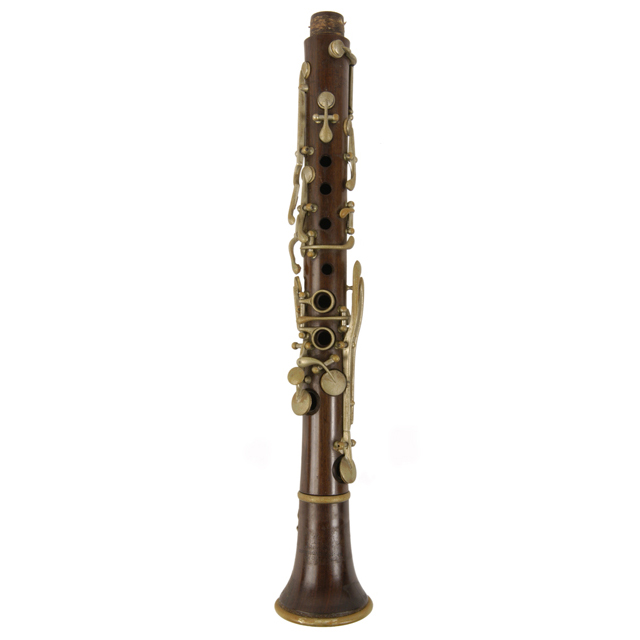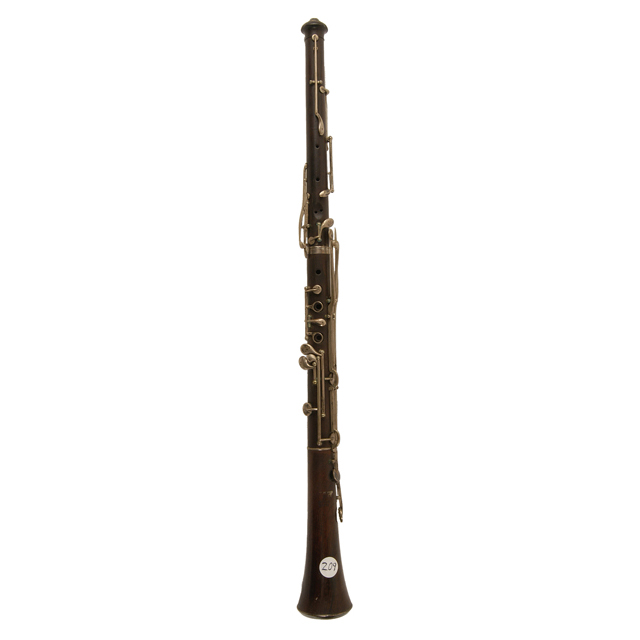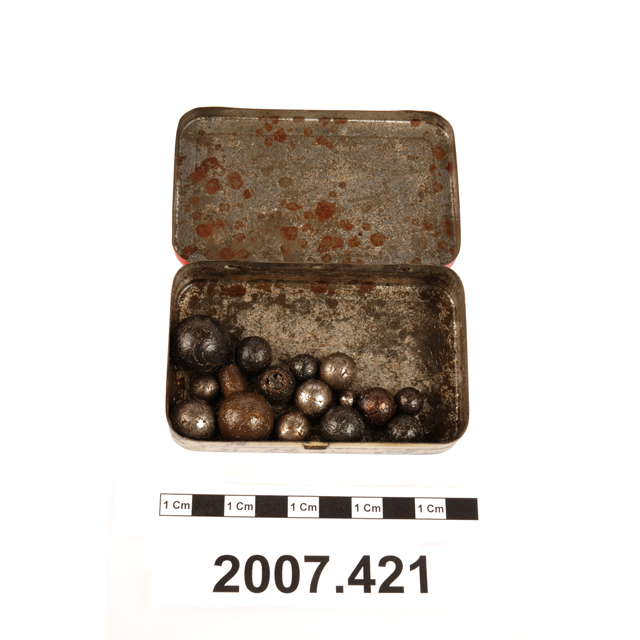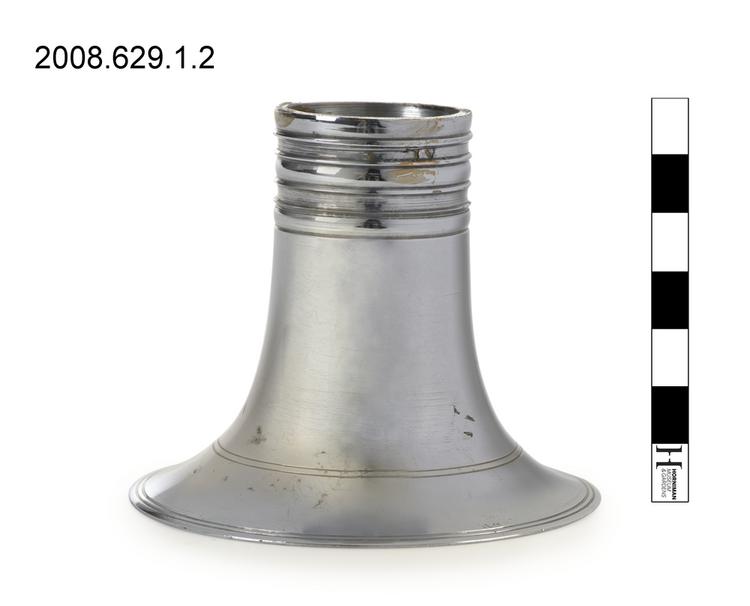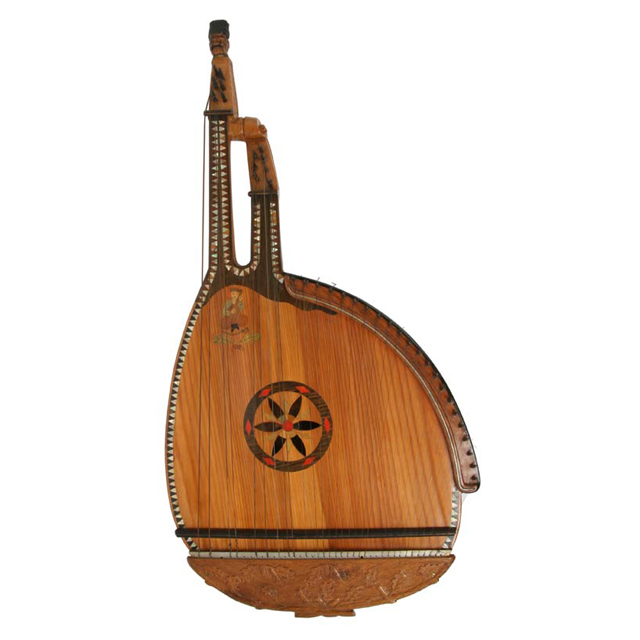
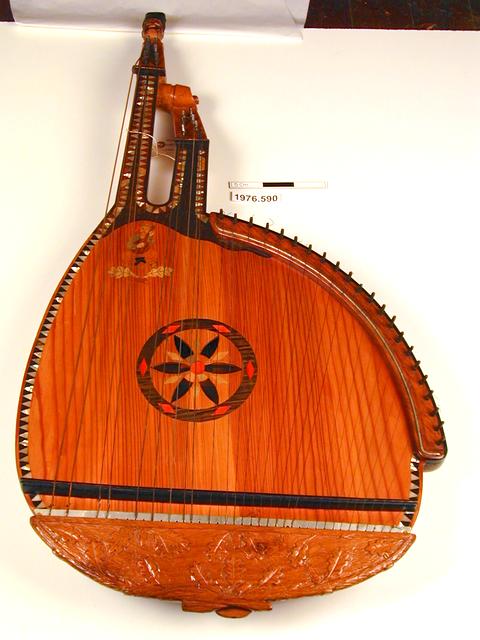
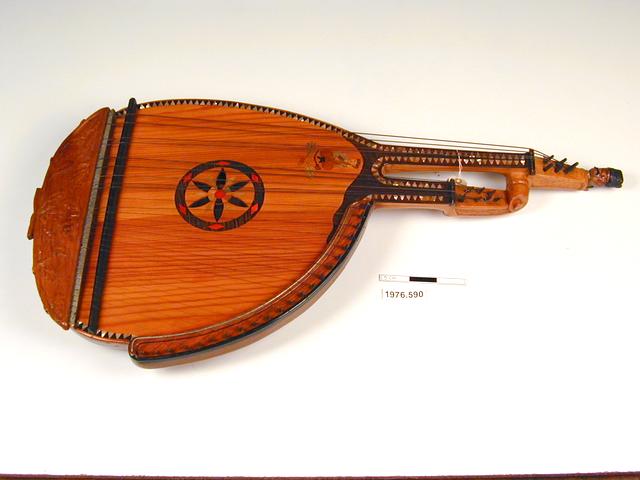
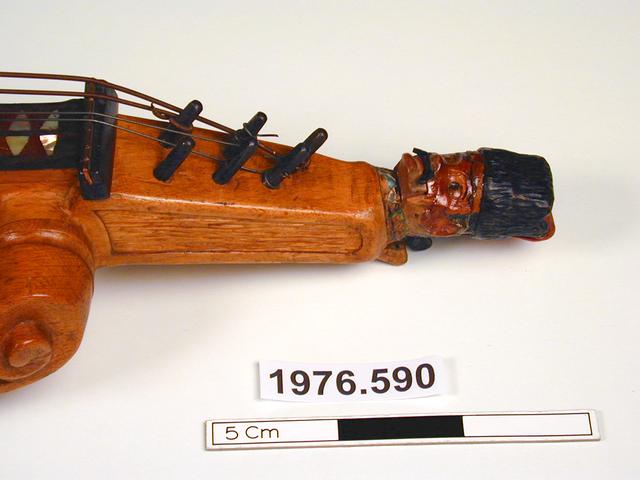
Bandura, box zither. The wooden body is of asymmetrical shape. There are two linked necks on the bass side, and on that side the table follows the normal curve of a lute. The treble side of the table is much extended laterally and has a shoulder which describes the quadrant of a large circle. Convex back. The table is decorated with inlays in two places. Below the termination of the necks is the figure of Cossack Mamay playing a lute and below him a sabre and a sprig of oak leaves and acorns. The rose is of a rudimentary floral shape and is decorated with inlays of coloured woods. The margins of the table and the edges of the front of the necks are decorated with a zigzag of triangles alternating between black wood and mother-of-pearl. The instrument originally had 36 strings, of which 11 are missing. Six piano wrest pins enter the peg-box, at the top of the longer neck, eight at the peg-box at the top of the shorter neck, while a further 22 are arranged round the treble shoulder. The instrument appears to be strung with piano strings, the 14 attached to the necks are of overspun wire, while the remainder are single wires of varying gauges. The strings are attached at their lower ends to a perforated metal strip, over which is screwed a wooden tympanum, carved with oak leaves and acorns. The shorter neck terminates in a scroll that is laterally extended to join the longer neck, which has a finial carved in the shape of a male Cossack head wearing a fur cap. The head appears to have been equipped with an articulated jaw, although this has now been immobilised in the course of repairing a break. The instrument is very heavy.
The bandura is considered by many to be the national instrument of Ukraine. This example was presented to the Horniman Museum by the Association of Ukrainians in Great Britain, based in Notting Hill, London. It was made by the Ukrainian Michael Teluk in Reading in 1945. This was one of the most tragic years in Cossack history, when thousands lost their lives at the end of World War II. Teluk created the bandura with a double fingerboard and pegbox. It is decorated with symbols of Cossack and Ukrainian culture, such as the trifolium oak leaves and the figure of Cossack Mamay, a Ukrainian hero, painted on the soundboard; also the carved wooden finial of a Cossack head.



